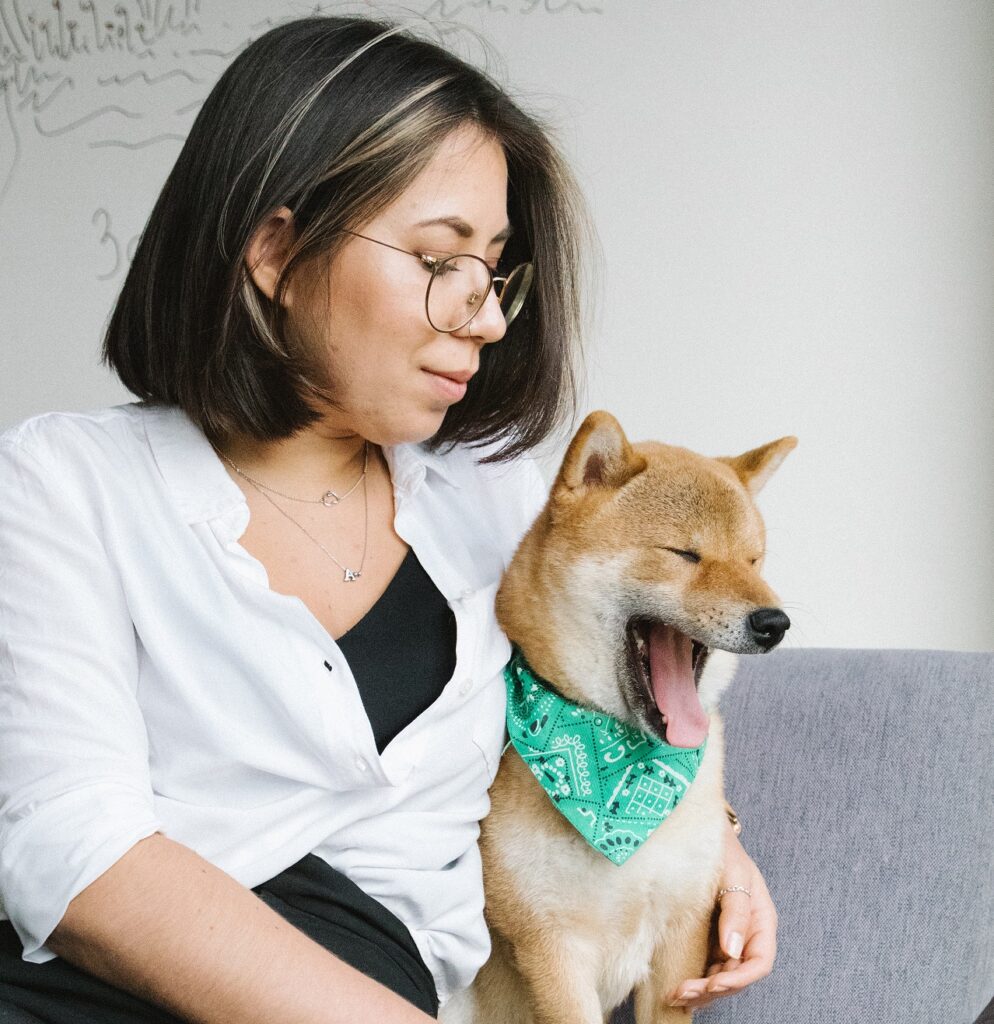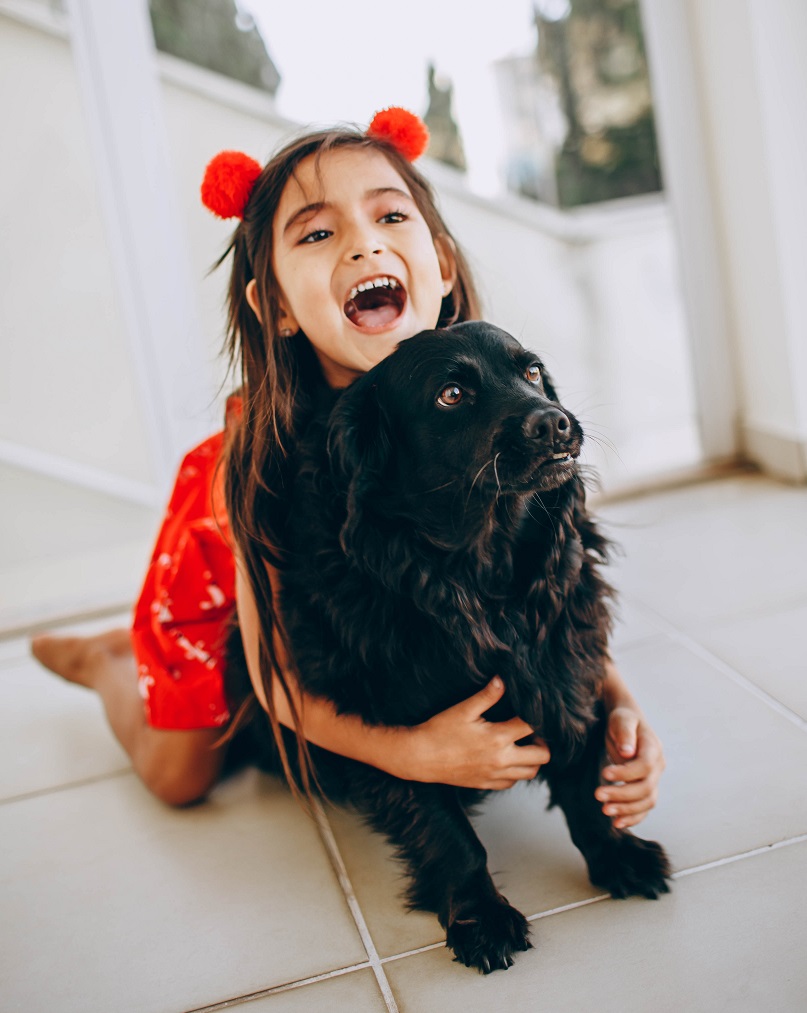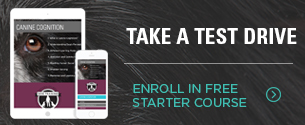
The family dog is so closely involved in the everyday activities of a household that it’s easy for people to view them as a childlike family member. Unlike a child, however, dogs can’t say “no” when they are frightened or anxious, and their ways of expressing nervousness or discomfort can be awfully subtle.
We can’t expect people to instinctively understand a dog’s body language. As dog trainers, it’s up to us to explain. By showing your clients when their dog is saying “nope” their dog will be happier and less anxious, their home training sessions will be more successful, and human family members, especially small children, will be safer as well.
Why is it so important for guardians to understand a dog’s body language?
Of course, the primary reason for learning to interpret a dog’s body language is to help make the dog happy and comfortable in their day-to-day life. However, by quickly recognizing when a dog is stressed and stepping in before the pet starts to feel too uncomfortable, their guardian will also safeguard other animals and people, especially children.
We all want to avoid frightening a dog to the point where they nip or bite. Even just one bite can unfairly label a dog as dangerous. The dog’s guardian could even be held financially or legally responsible for an injury.
By teaching your clients a dog’s many voiceless ways of saying “no, please,” they can take calming steps to ensure their dog doesn’t feel pressured to use a bark, growl or nip to make themselves understood.
Teach your clients these 10 ways dogs say Nope!
1. Lip licking
Sure, a dog will lick their lips after lapping their bowl clean, chewing at a stuffed Kong, or enjoying every bit of that training treat. But when a dog is licking their lips excessively, or in combination with some of the behaviors discussed below, it’s likely they are nervous, anxious, or physically uncomfortable.
2. Yawning
Just like humans, dogs may yawn when they are tired or extra-relaxed. But if a dog begins yawning when a visitor approaches, a child tries to pet them, or when they are in a new or unfamiliar environment, it‘s likely the situation is causing them to feel anxious.
3. Turning their head away or avoiding eye contact
We can almost feel the joy when a dog grabs their favorite toy and looks up into our eyes as if to say, “Play with me!” Eye contact is important for communication in both people and animals, and expresses a variety of emotions. A dog who avoids eye contact and turns their head off to the side when a toddler comes up for a hug isn’t offering their neck for the embrace. They are probably expressing their unwillingness to participate in close contact.
 4. Whale eye
4. Whale eye
It drives some dog trainers right over the edge when they see cute (not!) social media pics of a toddler hugging the family dog while the dog stares around with the whites of their eyes showing clearly. Dog trainers often call this “whale eye.” Unfortunately, unknowing people share these hugging pics as examples of their dog’s tolerance of the child, when instead the dog’s facial expression is saying “please stop!” If their quiet signals of discomfort are ignored, the dog may suffer in heightened anxiety, or resort to a warning whine, growl, air-snap, or even a bite.
5. Hard eye contact
Too much eye contact is an even stronger way a dog says, “look out, or else.” A dog that stands stiff and stares hard and steadily at another animal or person is communicating that they are extremely uncomfortable. However, children especially might not realize they are being warned off and could press on, risking a growl or even a bite.
6. Shake off
Wet dogs shake their coats to send water flying, and dry dogs may shake their fur to shake off tension or stress, or to say “I’m done, now” when they’ve ended a play session or any big activity. Just as we humans pull in a big breath and let it go before we begin an important presentation (nervousness) or after our talk is done (relief or accomplishment), a dog’s full-body shake indicates they are trying to “shake off” big emotions.
7. Drooling
Some dogs, when feeling anxious or stressed, may produce more saliva than usual, causing them to drool. This can be especially true in situations where a dog feels threatened or overwhelmed, like during a vet visit or when meeting new people or animals. Drooling can also be a sign of internal pain or nausea, so if it continues and the cause can’t be pinpointed, a vet check is probably in order.
8. A tucked tail
Most people are familiar with the saying, “He ran off with his tail tucked between his legs,” but people still sometimes fail to notice when their dog’s normally loose and happy tail falls low and stiff, indicating they are uncomfortable. It’s important to remind dog guardians that a dog’s tail expresses emotions in other ways than just wagging.
9. A wagging tail
Speaking of wagging, it’s hard to bust the myth that a wagging tail always means a happy dog. A dog expresses all sorts of feelings with their tail. A stiff high wagging tail can indicate aggression. The speed of the wag can indicate a dog’s level of excitement. A slow wag is a relaxed or cautious dog. A fast wag can be an excited or more aroused dog.
10. Panting and sweating paw pads
Dogs cool themselves by panting and sweating through their paw pads. But excessive panting can also be a sign of nervousness or even physical pain. Dogs who are very frightened may leave their damp, sweat-slick pawprints on dry surfaces. If a dog is panting heavily, especially when they are cool and not exerting themselves, it’s important for their guardian to look for something that could be upsetting or exciting them and try to alleviate their stress. If there has been no change in their environment, they could be uncomfortable due to illness or an unseen injury.
When a dog is continually expressing physical signs of anxiety, a trip to the veterinarian is a good idea, to check for a possible physical cause.
The Victoria Stilwell Academy teaches the language of both dogs and people
This is by no means an exhaustive list of the ways dogs show they are stressed, but by helping your clients recognize some of the common behaviors dogs use to express their nervousness, fear, or agitation, you are helping them become their dog’s advocate. They’ll know when they should step in to de-escalate stressful situations, or when to seek expert advice from a dog trainer, animal behaviorist, or a veterinarian.
If helping people build a strong, understanding, and happy relationship with their dog strikes a chord for you, the Victoria Stilwell Academy can guide you to the next level. Learn more about our flagship Dog Trainer Course, or stay on top of new developments in dog training by attending our annual Dog Behavior Conference.

 4. Whale eye
4. Whale eye

